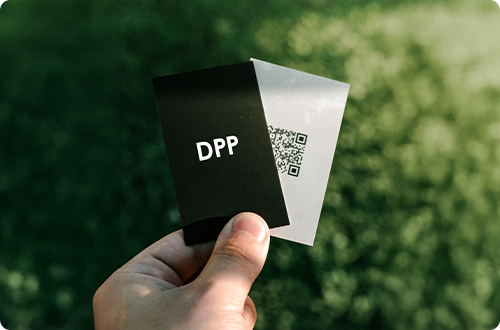
What is a PIM System?
PIM is short for Product Information Management. A PIM system is a software solution that helps you collect, enhance, and distribute product information in a centralized, efficient, and media-neutral manner. The processed data can then be delivered to your company's various sales channels in the appropriate format, such as print/online catalogs, online stores (e-commerce) or applications.
A PIM system lets companies manage product data in one place and use it in many ways. Like ERP systems, PIM systems are now fundamental to businesses. PIM systems can be used to increase sales efficiency, optimize marketing strategies, ensure consistent customer communication, and improve internal processes.
PIM software simplifies the management of product information. It centralizes the organization of product data and enables efficient multi-channel distribution.
Product information management (PIM) systems allow you to store data in a central database. You can import existing data from various systems once or regularly (e.g., master data from an ERP system or technical data from Excel lists). You can also add product data, such as marketing texts, images, videos, translations, and other key data, via maintenance pages. This centralized data can then be used for various applications, such as web stores, dealer exports, and product catalogs.
Typical applications (Use Cases) are:
|
|

What a waste of resources;
Changing product data on all platforms is extremely time-consuming.

Redundant data maintenance leads to errors, poor data quality, less customer satisfaction;
Changing product data on all islands means errors are inevitable
What Problems are Solved with PIM Software?
Many businesses still manage their products and product data in a redundant manner, within numerous files and systems. For example, master product data is kept in the merchandise management system, product sales data is rather kept in the print catalogs, data sheets, labels and websites, and sometimes even in Excel lists of some employees. However, when a business has to maintain product data on these "islands", this not only means a huge waste of resources (having to input changes on each and every platform), it is only human to accidentally forget to change something on one of the numerous platforms or channels, leading to some of the data to be incorrect, or out-dated. PIM systems allow product data to be maintained centrally and thereby far more efficiently.
What are the Benefits of a PIM System?
Internal benefits
| External benefits
|
Collect Data
First product data is collected from various sources. These include, for example, suppliers, ERP systems, catalogs, websites and social media. The data can be in different formats, such as an Excel spreadsheet, PDF or XML. This external data is prepared and either input into the system, or automatically imported via interfaces from the PIM to these external systems.
Refine Data
Next, the data must be refined. This means that it is checked for completeness, accuracy and consistency. The data is enriched with images which are usually taken from a dedicated media database. High data quality is ensured via quality reports and quality management, which allows a quick overview of data quality via a dashboard. The process of refining the data is supported by workflows, with which different employees are assigned appropriate tasks and rights meaning that processes are configured appropriately.
Output Data
In the third step, the refined data is exported to the desired output channels, often via interfaces. This data can then be used to generate print documents, product labels, apps, online shops, information portals, or more.
Interfaces and Importing
If you maintain some of your product data in other systems, e.g. article numbers, names and prices in your ERP system, then it is important that you can transfer this data to the PIM system via import or interfaces. PIM systems offer various import formats such as CSV, Excel, BMEcat XML, GOM XML, TecDoc TAF in order to transfer data changes from other systems at fixed times (e.g. at night). Some also have interfaces to import data changes on demand from, e.g. via SOAP or REST web services. Systems often differ in terms of how easy it is to configure an import or interface to the system. In this regard, it is worth inquiring about customer testimonials to discover their experiences with a particular PIM system.
Entry and Maintenance of Further Data
Once basic data has been imported, further product data is added in the PIM, e.g. marketing texts that are not maintained in the ERP system, these are assigned to product categories and added to product relationships. Technical industries in particular find it important to enter technical characteristics in a structured manner, e.g. parameters such as temperature range, dimensions or pressure, as this can significantly improve the efficiency of daily data maintenance. The technologically leading PIM system ANTEROS has particular strengths< in this regard and offers various data types, nesting of parameters, calculation of parameters based on others (e.g. volume based on length, width, height or a web description based on fixed text modules and parameters) and much more.
Image Maintenance
Images such as product photos or drawings, as well as documents in the form of safety instructions, operating manuals or videos, also provide important information about a product. Product images and accompanying documents are becoming an increasingly important for customers' purchasing decisions when navigating an online shop. Product images are also helpful for catalogs and price lists, allowing customers to quickly and intuitively find the information they need. Some PIM software has an integrated media database for images and documents, while others connect third-party systems via interfaces. Integrated media databases only require images to be uploaded one time in print quality, and then they automatically generate other formats, e.g. web-size and -mini or images in Amazon format. This makes the process of displaying small product images in the PIM lists much faster, and the system can also directly use the image variants for online stores or generated product catalogs - images do not have to be regenerated for each use. The technologically leading PIM software ANTEROS has a fully integrated media database in the form of the MAM module.
Text Translation
If you export your products to multiple countries, it may be important to prepare the product data not only in English but also in other languages as well. After all, sales documents with product data in the customer's own language boost sales! However, translating texts can take varying amounts of time and effort in a PIM system. Without translation support, you always have to keep track of what information has been changed in order to be on top of translation into the other languages. Translation support in the PIM can significantly reduce this effort.
Some PIM systems have an integrated translation module, while others connect third-party translation systems via interfaces. Integrated translation modules usually make it possible to list all texts that have either not yet been translated or whose main text has changed. The translation module by the technology-leading system ANTEROS also uses colors to mark any changes that were made to relevant texts since the last translation. The translator or the national business can either enter the translations into ANTEROS.tm directly or use an Excel export to make any translations within an Excel document and subsequently import and release the edited file.
Quality Control
Some PIM systems offer functions to specifically check and improve the quality of the product data. This becomes even more important when you manage more and more data in the PIM system or want to transfer data from suppliers into the PIM. In these systems, you can often create test criteria or test reports yourself to check the quality of the product data, images or documents, e.g. whether marketing texts have already been entered in German and English or at least one image is linked per image. The inspection results can be arranged neatly in a dashboard. This way, you can not only monitor the quality of your data, but also specifically jump into relevant objects in order to improve the data. A few systems (such as ANTEROS.qm) also offer so-called quality gates, which make it much easier to achieve milestones by regularly monitoring intermediate results. When combined, quality reports and the dashboard can be used to accommodate staged input of data by a team, in which, for example, one employee is responsible for the marketing data and another for the technical characteristics.
Exports
In order to give your product data to your retailers and partners in a suitable format, e.g. for your own online shop or catalog, you should check which formats you consider suitable. The formats vary from industry to industry. For example, formats such as DATANORM and GAEB are relevant for construction suppliers, Arge for the SHK industry or TecDoc for automotive suppliers. In addition to the actual data exchange format, data for a standard classification such as ETIM, ECLASS or Proficlass is also frequently requested. Even though there are many standards here, it is often the case that several standards or standard versions are relevant. This requires extensive consultation with your partners and, if necessary, a competent PIM service provider. The INCONY team has been active in this field for more than 20 years.
Workflows
Workflows allow you to configure your own processes in the PIM system. Thus, you can control the gradual work of different people on the product data specifically via workflow states, state transitions, authorizations and actions. In the PIM software ANTEROS you can create workflows yourself in a graphical editor, transfer them to the PIM (deploy) and then perform workflow-controlled work.

Marco Lombardo,
Head of Business Processes & Digitalisation at MC Bauchemie
"With PIM, we've simply made it possible to have all the information around the product in one system."
Web: Websites, Online catalogs, Online Stores and Product Portals
In order to use the centrally maintained product data and images from your PIM for ecommerce such as websites, online catalogs, online shops or product portals, all PIM systems offer interfaces to ecommerce and shop systems, such as Shopware, Intershop, Magento, ... Some also have their own ecommerce module, like , which can be fully integrated into your ERP system (SAP, Navision, ABAS, Infor, ...) via a web service interface.
Apps: for App Stores and Web Apps
A few suppliers also offer an app with which their customers can specifically search for their products, compare them and then request or order them. Not only are the web shop features available for Android and iOS, they can also be flexibly expanded. For example, a photo function can be added, which automatically matches photographed spare parts with suitable products in the shop.)
Comparison of the semi-automated and fully automated approach to print generation in the PIM
Print: Catalogs, Price Lists and Data Sheets
In the digital age, sales documents such as catalogs, price lists and data sheets are still important, even if they are not often provided to customers in printed form but as PDF files. PIM systems offer two technologies for creating documents:
|
|
Why do You Need a PIM System?
In today's economy, companies face the following challenges in data management and sales:
|
|
In Conclusion: PIM Systems are the Key to the Digital Future
A PIM system is the ideal solution to improve your product data management sustainably and strengthen your company's competitiveness. By centrally managing and regularly updating your product information, you increase the efficiency of your internal processes and your visibility in e-commerce and across all sales channels.
A professional PIM system also ensures that you provide your product data consistently and media-neutrally for web stores, catalogs, apps, and partner portals. This strengthens your brand presence, shortens time to market, and secures valuable competitive advantages.
A powerful PIM system is essential for managing product data efficiently and ensuring it is future-proof.
User Reports
Read testimonials from companies such as Poloplast, Motul and Zeppelin that use ANTEROS. Find out how the PIM system is implemented in the companies, how the employees were involved and what the benefits are.
Benefit from the experiences of other companies!
INCONY: The PIM and Cross Media Specialist
INCONY is a German software company that has been developing PIM and cross-media software for over 20 years. ANTEROS, INCONY's PIM and cross-media solution, supports companies in the management and use of product data. ANTEROS can merge, cleanse and harmonize product data from different sources. The software also offers functions for creating marketing and sales materials for print, online and mobile. INCONY has customers across various industries and of a range of sizes in Germany, Europe and around the world. The company has already received several awards.
Would you like to experience the ANTEROS PIM software yourself?
Find out how ANTEROS can optimize your product management in a guided demo by one of our PIM experts.













